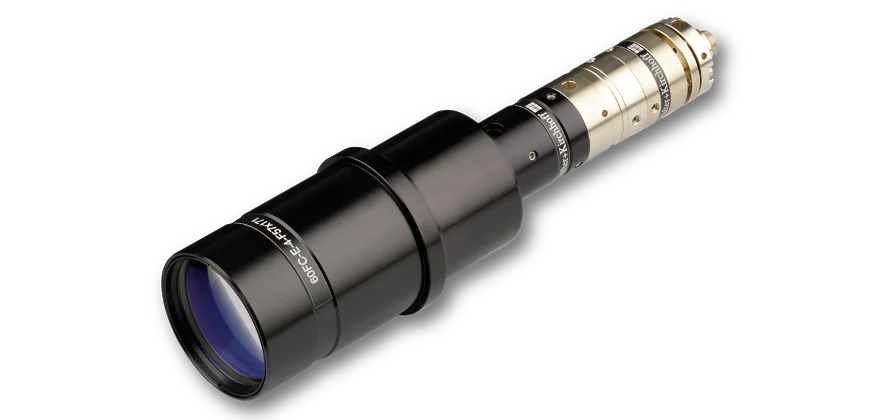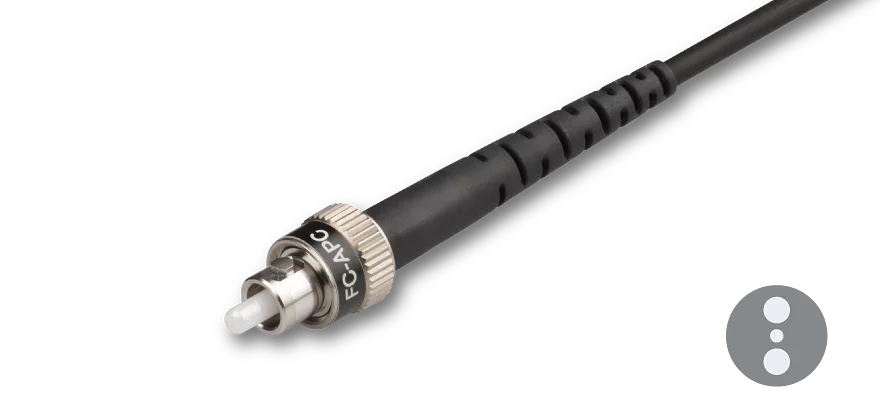Schäfter+Kirchhoff fiber collimators of series 60FC-BC are designed for dichroic beam combination and collimation. They posses two fiber receptacles and an integrated dichroic beam combiner. The fiber collimators of series 60FC-BC with two fiber receptacles are used when the wavelengths for combination are so different that they cannot be transmitted by a common single-mode or PM fiber.
An optics for each application
A large variety of optical designs allows that the optimum focal lengths for the individual sources can be selected for each application. All lenses are AR-coated.
Optical design
The radiation of the two input fibers is collimated to a beam with a diameter in the range Ø 1 - 4 mm, respectively. An adjacent dichroic beam combining optics superimposes the two sources to a common beam. Finally the beam is expanded to the desired diameters. Since the focal lengths can be chosen independently for the two input wavelenghts, the resulting collimated beam diameters can be chosen to differ. Or the focal lengths can be chosen in such a way so that they compansate for different fiber NAs. By defocussing one of the input channels, it is also possible to compensate for chromatic aberration of the output optics.
Adjustment of focus
All fiber collimators of seris 60FC-BC are aligned for the specified wavelengths.
In case of need you can change the distance between fiber end-face and the first collimating optics by means of an eccentric key. The lens does not rotate when adjusting the focus. The final focus setting is locked by means of two radially arranged clamping screws. Additionally, attachment optics can be mounted to the front of the collimator.
Optimum lens performance
The angled polish of connectors of type APC is considered by a pre-angled mechanical coupling axis that compensates the beam deflection and you can use the lens centrically. This minimizes aberrations simply resulting from a non-ideal beam path through the lens.
Connector Type
The fiber collimator can be equipped with FC PC (wide key*), FC APC (wide key*), SMA-905 (F-SMA), ST or LSA (compatible with fiber connectors type DIN, AVIO and AVIM) receptacles. In case of FC or LSA with a spring loaded ferrule the fiber coupler has an additional grub screw to increase pointing stability.
Material
The fiber collimators are made of nickel silver, black anodized aluminum and stainless steel.
Mounting
The collimators series 60FC-BC all are compatible to the multicube™ system (microbench or cage system).
Option
Besides these series 60FC-BC fiber collimators there is the series 60FC-BC-Q. These fiber collimators generate a common collimated beam out of two sources. The polarization of the superimposed output beam is circular for both wavelengths.



